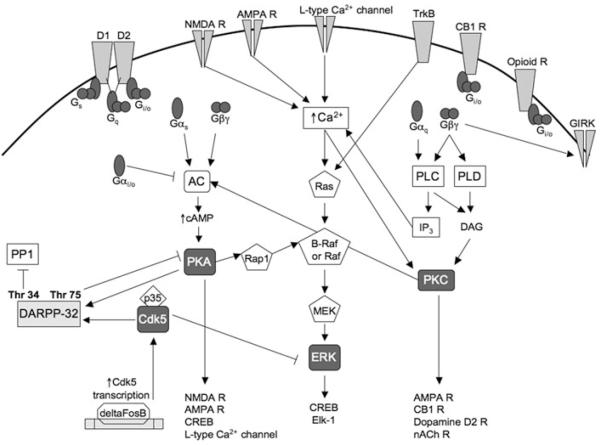Figure 1.
Diagram of the major kinase signaling cascades involved in drug addiction. Dopamine receptors activate heterotrimeric G-proteins. D1 receptors activate stimulatory Gs, D2 receptors activate inhibitory Gi/o, and D1/D2 heteromers activate stimulatory Gq. Cannabinoid CB1 receptors and opioid receptors also activate Gi/o. Gαs and Gβγ released from Gi/o activate adenylyl cyclase, leading to increased cAMP levels which activate PKA. Induction of the transcription factor deltaFosB increases Cdk5 expression. Differential phosphorylation of DARPP-32 by PKA and Cdk5 inhibits or facilitates PKA signaling. Gβγ also activates GIRK channels leading to inhibition of excitability. Gαq and Gβγ activate PLC and PLD, leading to the activation of PKC. Several downstream PKA and PKC targets are listed at the bottom. Activation of ionotropic glutamate receptors and L-type calcium channels increases intracellular calcium levels, leading to activation of the Ras-Raf-MEK-ERK pathway. Activation of TrkB receptors also activates the ERK pathway, leading to the phosphorylation of transcription factors CREB and Elk-1. Examples of cross-talk between the PKA, PKC, Cdk5, and ERK signaling pathways are illustrated. This diagram is a simplification that does not incorporate differential expression of kinases in different brain regions and cell types.

